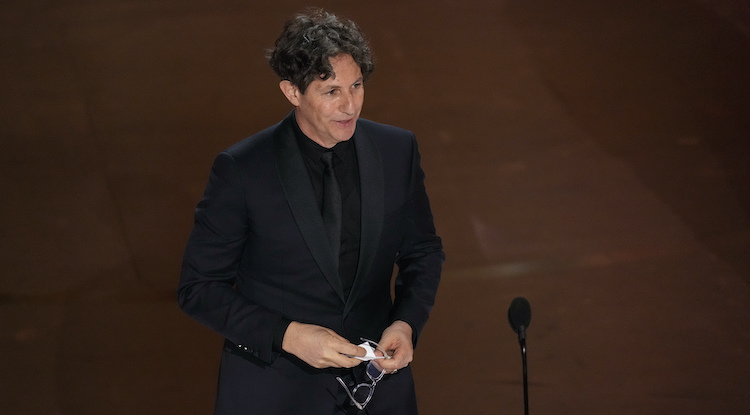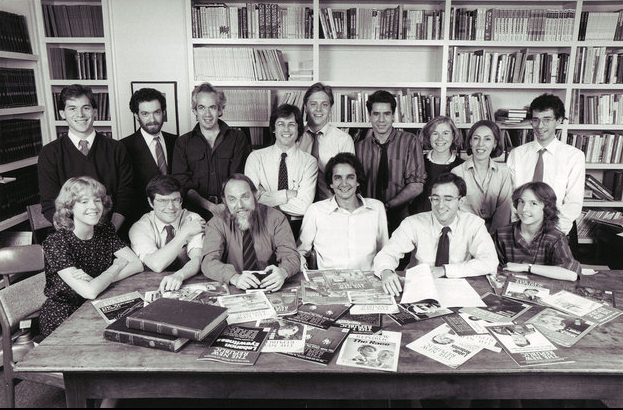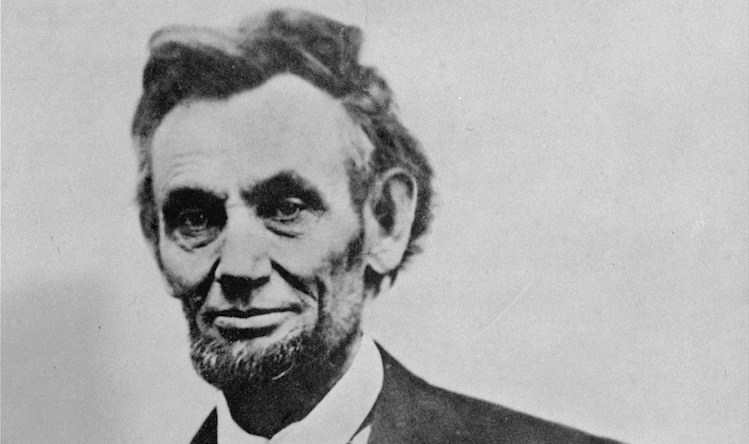This PAST SUMMER, I spent half an hour scrolling through independent journalist Andy Ngo’s series of “Antifa mug-shots” on Twitter. These were images of violent Antifa and Black Lives Matter gatherings that had been organized to call attention to the first anniversary of George Floyd’s death at the hands of former Minneapolis Police Officer Derek Chauvin. As I looked at the photos, the thought that kept crossing my mind was that the people arrested for Antifa and even BLM violence seemed to be overwhelmingly Caucasian. By my rough count, well over 90 percent of Ngo’s images depicted a racially un-ambiguous white person engaged in one form of brutality or another in the name of racial justice.
It’s fair to say that this was to some degree a regional phenomenon. In the Atlanta riots after the killing of Rayshard Brooks, for example, most of the participants were not white. However, Ngo’s hundreds of pictures of virtually all-white “Black Lives Matter” activists, taken in Portland and other cities, accurately capture a significant trend in contemporary U.S. society. Across a range of issues—politically correct language, police defunding, affirmative action, gun rights—the people pushing for major “pro-POC” social and legal change are not themselves people of color. Instead, many are white radicals, attempting to use the genuine plight of poor minorities as a wedge to force through changes to American society—changes that most people of color do not ourselves want. Both anecdotal evidence and hard data bear this out.
The woke left’s recent advocacy for politically correct, intensively monitored speech provides perhaps the best contemporary example of this. To put it mildly, it’s not difficult to notice that a significant number of Americans currently seem to be very offended by everyday things their countrymen say. A complete list of those “canceled” for offensive speech during 2020–21 would run many pages long, but a representative sample includes:
-
- the long-term play-by-play man for the Sacramento Kings basketball team, who was fired for tweeting “All Lives Matter” at a black player with whom he regularly enjoyed friendly political banter;
- popular UCLA professor Gordon Klein, who had to be placed under armed guard at home after stating aloud that he did not think “trauma” related to the death of George Floyd was a sufficient justification for skipping law-school exams;
- Harry Potter author J.K. Rowling, who had her name taken off a British school after her controversial comment that biological sex is real.
Among the more remarkable cases, one of the U.S.’s leading soccer stars (for whatever that’s worth) was let go from his job as a professional athlete following controversial social-media posts by his wife. The Los Angeles Galaxy opted to part ways with winger Aleksandar Katai after his spouse Tea said online (in Serbian) that violent protesters were “disgusting cattle” who should be “shot.” Katai himself never said it.
Many Americans seem to want this level of censorship enhanced. In fact, this sentiment was surprisingly popular even before George Floyd’s death. Pew Research Center data from as far back as 2015 showed that at least 40 percent of young Millennial Americans favored limiting speech that is “offensive to minorities.”
If you go by the interpretations of popular media, attitudes such as these are driven by hypersensitive minorities. As Yascha Mounk noted in the Atlantic, most Americans see Internet debate as taking place largely between two camps: “Team Resentment,” made up of older white conservatives and “Team Woke,” which is “young, likely to be female, and predominantly Black, brown, or Asian.” Intuitively, this makes a certain kind of sense: A casual observer might well assume that the majority of those attempting to, say, change the traditional term Latino/a to the more gender-neutral Latinx would themselves be Latino/a/x.
However, as Mounk notes, “reality is nothing like this.” According to the best publicly available data, members of most minority groups dislike PC culture more than whites do. Eighty-eight percent of Native American Indians, 87 percent of all Hispanics, 82 percent of Asian Americans, and 75 percent of blacks (vs. 79 percent of whites) call political correctness “a problem” for the United States. Per several studies, the only group that strongly supports the movement of speech in a more woke direction is made up of young liberal white women. A Pew poll from the summer of 2020, specifically about the use of “Latinx,” strongly corroborates this point. Only a quarter of all Latinos and roughly 38 percent of Latino college graduates have even heard of the term. What’s more, only 3 percent ever opt to use it, and many seem to find it ridiculous. If anything, the pattern here is one of white leftists telling Hispanic taxpayers to speak in a more woke fashion—and Latinos refusing to comply.
The debate over policing speech is not an outlier here. Many other contemporary policy debates break down essentially to left-leaning elite whites demanding social change on behalf of minority Americans, with actual black and brown citizens opposing the proposed changes roughly as much as the larger American population does. Defunding the police, for example, was a left-wing cause célèbre for much of 2020. In June of that year, the New York Times ran an astonishing op-ed headlined “Yes, We Mean Literally Abolish the Police.” Around the same time, Mother Jones argued in a widely read piece that the police should be defunded even if it did not “poll well.” Additionally, many left-leaning cities (such as Portland, Minneapolis, New York City, and Los Angeles) actually moved to slash police budgets.
However, numbers from the journalist Matthew Yglesias, cited in the Mother Jones piece, indicate that police defunding was opposed 49–29 percent by blacks and 60–26 by whites, thus inspiring the defensive thrust of the article’s argument. A more decisive study conducted by Gallup and reported on extensively by Newsweek in August 2020 found that 81 percent of black Americans want the police presence in their neighborhoods “to either remain the same or increase.” Only 19 percent of blacks favored any decrease whatsoever in police presence. Newsweek author Jocelyn Grzeszczak stated flatly: “Black Americans’ responses to the question were nearly on par with the national average, in which 67 percent of all U.S. adults said they wanted police presence to remain the same and 19 percent said they wanted it to increase.”
There’s no shortage of serious empirical analysis demonstrating similar findings.1 Entertainingly, for example, black Americans test as perhaps the most conservative and traditional U.S. citizens when it comes to issues of homosexuality and transgenderism. While slogans such as “Black Trans Lives Matter” have become a staple of left-leaning demonstrations, the most recent Pew data indicate that 55 percent of black Democrats and 41 percent of Hispanic Democrats “say that a person’s gender is determined by their sex at birth,” while fewer than 25 percent of white Democrats agree. Similarly, 68 percent of white Democrats said that society has not gone far enough toward acceptance of transgender people, while only 46 percent of black Democrats and 50 percent of Hispanic Democrats agree. And it’s important to note that figures for black and Latino conservatives, who are likely to be even more skeptical of gender flexibility than their left-leaning counterparts, were not provided in the article just cited. It’s worth recalling that a majority of black voters in California voted against same-sex marriage, famously pushing the state’s Proposition 8 over the finish line a decade or so back, and serious academic research continues to link the traditionalism of black attitudes to factors such as high levels of church attendance.
Then there’s education policy. On charter schools, labeled racist by most liberals and leftists, data show a significant split. Blacks and Hispanics, especially parents, overwhelmingly favor school choice. According to recent data from Democrats for Education Reform, 58 percent of black Democrats express favorable views of charter schools, while just 31 percent express unfavorable ones; the equivalent figures for Hispanics were 52 percent and 30 percent. In contrast, just 26 percent of white Democrats favor charters, while 62 percent do not. Education writer John Valant notes that support for charters is “strong and stable” among blacks and Hispanics, but “weak and…plummeting” among left-leaning whites—and goes so far as to say that white opposition to charters could have “tangible, unwelcome consequences for families of color.”
The point should by now be clear. American radicals have recognized—at least since the late 19th century—that racial conflict is a potential seedbed for some form of proletarian revolution. When advancing plans relating to hotly contested issues, such as police reform, political correctness and speech codes, or even the fight against climate change, it is often irresistibly tempting for advocates to market these as routes not only to left-bloc political success but also to “racial justice.”
The simple reality is that actual black (and Hispanic) citizens do not show much enthusiasm for constantly policing our language, pulling good (and mostly minority) cops out of our own neighborhoods, letting biological males play hoops in the WNBA, or depriving their kids of a sound education in service to notions of equity.
_____________
OWING IN PART to my being a black man, I find that an obvious explanation for the minority rejection of these ideas springs to mind. While it’s often ignored during discussions among (mostly white) activists, the large majority of those harmed by well-intentioned but misguided radical policies will themselves be “people of color.” This may be especially true in the case of proposals for defunding America’s police forces. As empirically minded scholars on the center-right have long pointed out, “soft on crime” anti-police policies tend to dramatically increase crime rates in urban minority neighborhoods.
This is an objectively measurable fact. Between 1963 and 1993, murders in the United States increased from 8,640 to 24,530 (a 284 percent rise) following the “fruit of the poison tree” doctrine mandating the inadmissibility in court of any evidence compromised by technical police misconduct, and following the widespread adoption of “community policing” and more lenient sentencing policies. Homicide was not an unusual outlier offense in this respect: Forcible rapes surged from 17,650 to 106,010 (an increase of 601 percent), and robberies from 116,470 to 689,870 (an increase of 592 percent). These trends, concentrated in poor urban and minority areas, did not begin to reverse until the adoption of no-nonsense “broken windows” policing by New York City and other big American cities in the mid-1990s.
We have, unfortunately and unnecessarily, seen the same trends return more recently. Multiple major outlets reported a “Ferguson Effect” increase in crime following the deaths of Trayvon Martin and then Michael Brown during the past decade, and DNAInfo analysts looking specifically at my hometown of Chicago established that police stops had dropped by almost exactly 90 percent during a period when gun-violence crimes “skyrocket(ed).” Last year saw another dramatic rise in crime from that baseline, as murders increased past the 20,000 mark for the first time in 25 years. Put differently, there were some 4,000 more murders in 2020 than there were in 2019—with the latter year by no means having been a famously peaceful one.
As I have noted in the electronic pages of Quillette, COVID-19 may have had something to do with this, but serious bodies such as the Commission on COVID-19 and Criminal Justice trace the beginning of last year’s surge in homicides (and “aggravated assaults and gun assaults”) specifically to “late May and June of 2020”—the period of police pullback and street rioting that immediately followed the death of George Floyd. In a USA Today op-ed from April 2021, Jason Johnson attributed the surge in violent offenses almost totally to the “retreat” of police forces across America, and he and others have pointed out that most of those killed during the resulting totentanz were urban minority men. Truly defunding the cops would be terrible for everyone, worse still for the nation’s city dwellers, and worst of all for blacks.
That sentence sums up the likely effect of many woke policies. For example, New York City and other metropolises are currently considering abandoning all elementary and middle-school gifted programs. The usual argument for this—invariably made without consideration of the fact that different ethnic groups currently have different mean scores on standardized aptitude tests—is that these programs must somehow be racist given that white, black, Hispanic, and Asian students are not always proportionately represented within them. Thus, the claim goes, they must be discarded to help people of color. Some educational systems have gone a step further and announced the abolition of all forms of high-stakes testing. This latter trend is not simply or even primarily a secondary-school phenomenon. The University of California system recently announced that it will abandon SAT and ACT scores as a requirement for admission across its entire suite of institutions. The primary goal here, at least per many supporters? More “ethnic and income diversity” on the UC campuses.
However, there are obvious problems with the idea of removing the most challenging college-prep courses from the schools in our nation’s big cities and then no longer requiring the graduates of those schools to study up for the SAT when applying to top (blue) state colleges. Most notably, the students, many of them members of racial minority groups, simply might not learn anything. And, in fact, evidence is mounting that exactly this seems to be happening. Over the past three years, respectively, precisely eight, 10, and seven black students got into Stuyvesant—New York’s top open-admissions public high school—after applying from various neighborhood institutions. As heterodox commentators such as John McWhorter point out, these figures are down dramatically from those achieved during years in the quite recent past, when a better infrastructure of gifted-and-talented and test-prep programs still existed in minority NYC schools. Most Stuyvesant seats that might once have gone to black or Jewish future scholars are today held not by Anglo-Saxon teenage gentry but by Asian immigrant kids. Fewer than 160 whites made the Stuyvesant cut this year, and 493 out of roughly 750 current students are Asian American. One more than suspects that the parents of those students have rejected progressive “help,” clinging hard to the gifted-and-talented programs in their local schools and calling in tutors if the resources aren’t readily available.
The hundreds of thousands of black and Hispanic enrollees in the country’s charter schools take the same approach. Thomas Sowell recently pointed out that in the major American charter networks, among those classrooms in which students of color make up 90 percent or more, kids perform almost exactly on par with the majority-white student population of the nation’s public schools. Some do far better. The average combined SAT score for the sizable and mostly black senior class at the Success Academy charter-school system in 2019 was 1268; 10 percent of the class scored higher than 1400. Like most charters today, Success Academy is a “pure lottery” school that does not get to pick and choose students. Given that fact and the school’s results—in New York City!—it is no surprise that minority parents, unlike white Democrats, are strong supporters of charter education.
It’s also not surprising that black Americans, concerned with rising murder rates in their neighborhoods and education policies that hurt their kids, are generally less consumed than white woke folk with matters such as hate speech. At the same time, the left’s focus on issues like harmful speech serves as a distraction from the woke initiatives that continue to fail minority Americans.
The obvious question that usually arises when someone makes these points is: “So why do 90 percent or so of black Americans vote for the Democratic Party?” While I am not a hard partisan for either electoral team, the answer is as simple as the query: We are constantly told that the only serious alternative to the left is headed up by genocidal racists. Even milquetoast Mitt Romney was lambasted for his desire to put “y’all back in chains” by future president Joe Biden while Donald Trump was frequently described by quite mainstream outlets as a literal white supremacist. This pitch has been wildly successful with minority voters. If it ever stops working—as I am hardly the first to note—a new era of U.S. politics could dawn almost instantly.
While we wait and see if this will ever happen, one practical piece of advice remains relevant: If you want to know what individual members of any particular group happen to think, ask them—not those who claim to speak and act in their best interest.
1 Though not related to wokeness, the pattern is similar on the issue of gun sales. In September 2020, gun sales to black Americans were up some 58 percent over the previous year, despite the left’s concerted push for significant gun-control measures.
We want to hear your thoughts about this article. Click here to send a letter to the editor.




